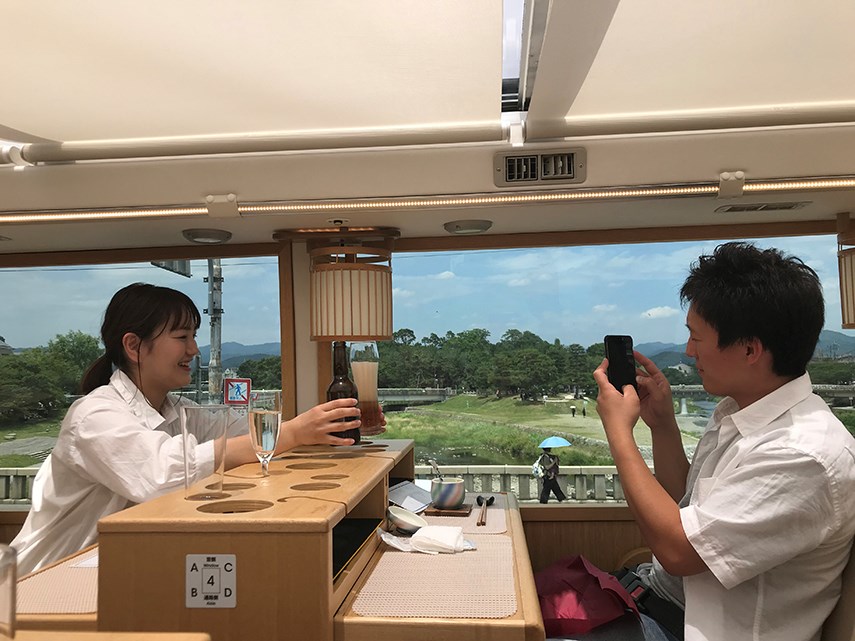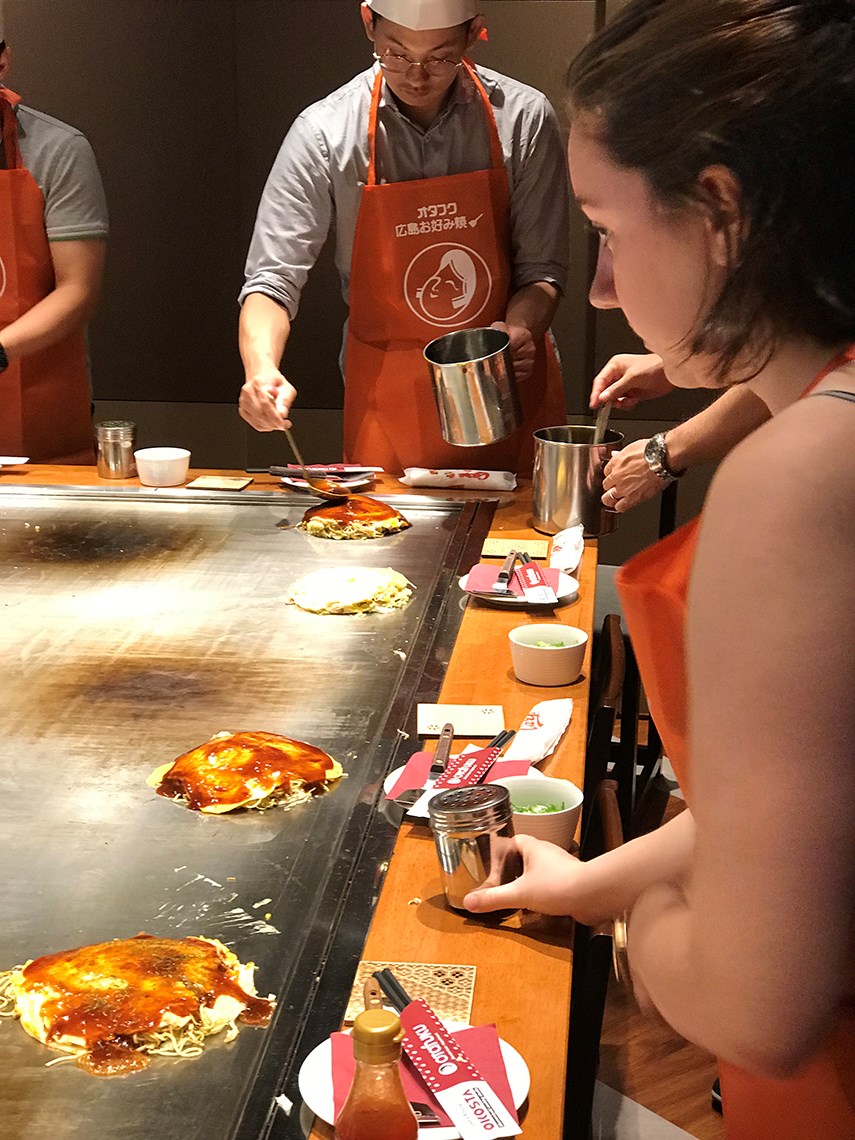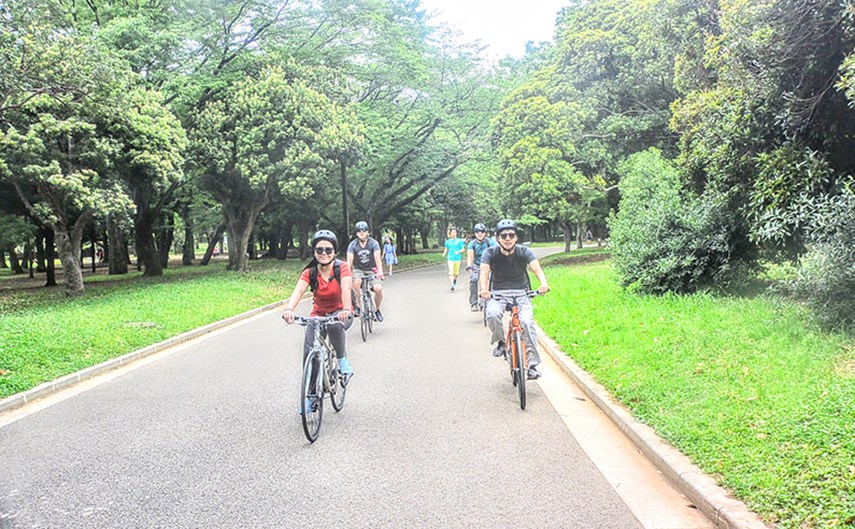Japan will soon be in the sporting spotlight, hosting the Rugby World Cup in the fall and the 2020 Olympic and Paralympic Games in Tokyo next summer. If you’re lucky enough to be attending either event, chances are you’ll be busy researching travel logistics and learning some essential Japanese phrases.
After visiting the country this summer, I can safely say Japan is ready for you. The JR rail network connects every town and city quickly and on time. With a little planning, Tokyo’s metro is equally efficient. For 38 million residents, it needs to be.
In a little under two weeks, I visited Tokyo, Kobe, Kyoto, Osaka, Nara and Hiroshima. I took an internal flight from Tokyo to Osaka but otherwise rode the Shinkansen ‘Bullet’ train. If you’re planning to make more than one trip on the Shinkansen, buy the JR Rail Pass before you leave Canada to save money.
The sport might keep you busy but here are three offbeat pursuits for when you’re between rugby matches or Olympic events.
Eat and ride in Kyoto
By the time I reached Kyoto, I had walked and cycled almost 100 kilometres through Tokyo and spent an exhausting day hiking Mount Maya in Kobe. I needed a break. Bus tours don’t normally figure on my travel radar, but a bus tour with lunch and guided commentary now had a certain appeal.
“Besides, you might meet people your own age,” my daughter Emma had suggested.
Kyoto is Japan’s former capital and still the country’s cultural centre. The open-top bus tour offered by Willer is a solid starting point to finding your bearings in a city with about 2,000 temples and shrines.
The Hassun or Kaiseki-style lunch is a multi-course platter served throughout the two and a half hours, and includes seasonal vegetables, pickles, tofu, rice and grilled fish. A cleverly designed, fixed wooden frame holds drink glasses steady, so your beer, wine or sake doesn’t spill on Kyoto’s sometimes bumpy roads.

The tour heads north from Kyoto train station, following the Kamo River and its numerous open-air restaurants. There’s little escape from the city’s summer heat and humidity but dining on terraces specially extended over the river for the season is a cooling distraction.
The area between Sanjo and Shijo is home to Pontocho Alley, which is pedestrianized and lined with traditional shops and restaurants. If you’re reading Arthur Golden’s Memoirs of a Geisha and want to capture a taste of old Asia, this is the place to return to when the tour’s over.
The tour passes the Kitano Tenmangu shrine, dedicated to the god of learning and a popular spot for local students praying for success in their exams. Kyoto is home to more than 40 institutions of higher education, so it can be busy.
Another tour stop, the Shimogamo Shrine, is one of 17 designated UNESCO World Heritage Sites in Kyoto and home to the ancient ‘ball’ game of Kemari. Every Jan. 4, Kemari is played at the shrine, where Japanese soccer and rugby players offer their prayers for good luck. Canada’s rugby team might consider a visit before they play the All Blacks on Oct. 2.
We stretched our legs at Togetsu-kyo bridge, crossing the Katsura River in Arashiyama on the western fringe of Kyoto. Along with numerous temples, the area is home to a bamboo grove that dwarfs visitors who walk its trails. It’s also a few degrees cooler in there.
Visit willerexpress.com for more information about Kyoto lunch and dinner tours.
Tokyo by bicycle
If you read enough Haruki Murakami novels, you’ll be acquainted with Tokyo neighbourhoods such as Roppongi, Ginza, Akasaka and Shinjuku. With every familiar name, I became more excited about finally seeing these districts in real life.
Tokyo is essentially a city of cities, home to more people than the population of Canada. Underground, the metro is efficient and affordable, if a little daunting the first time you use it. Above ground, for any hope of finding your bearings during a short stay, a bicycle tour is recommended.
Gakuto (Gaku) Miura led our group of four on a six-and-a-half-hour cycle through Tokyo ancient and modern: from the immense skyscrapers of Shinjuku and Roppongi Hills to the peace of Yoyogi Park, the Meiji Jingu Shrine and the Imperial Palace.
There are surprises along the way, such as suddenly finding yourself riding through Aoyama Cemetery, final resting place for about 14,000 people and a dog called Hachiko. More than 80 years after his death, Hachiko is still revered for his loyalty after returning to Tokyo’s Shibuya Station every day for nine years, waiting in vain for his master who had died at work.
After cycling through the expensive shopping district of Ginza, the Imperial Palace in Tokyo’s Chiyoda ward has the feel of New York’s Central Park to it: acres of lush green gardens abutting so many square miles of concrete. Inside the park-like setting is the main palace and private residences of Japan’s reclusive Imperial Family.
Back in Hachiko’s day, you could see Mt. Fuji from here. Today, you’d need a clear day to ascend the 48-storey Metropolitan Government Building for that view. It’s where Gaku’s tour usually ends. Sadly, the weather gods denied us a glimpse of Japan’s iconic mountain, 100 kilometres away.
Visit bicycletourstokyo.com for more information.
Making Hiroshimayaki
I’d never heard of okonomiyaki until we hosted a Japanese home-stay student, who made it for us last year. It instantly became our new favourite Japanese food. When my daughter Emma became a home-stay student in Kobe this summer, I visited her, and we resolved to visit Hiroshima to sample Hiroshimayaki, the city’s own variation on the popular dish.
Widely available throughout Japan (and a few Vancouver restaurants) but especially popular in Osaka and Hiroshima, okonomiyaki is a cross between a savoury pancake and pizza, and almost always made from shredded cabbage. (Don’t let the cabbage put you off – the deliciousness is in the toppings!)
We signed up for a cooking class – aka the Standard Hiroshima Okonomiyaki Experience – at kitchens located near the city’s main train station. The space resembled a TV studio with bright lights and busy instructors wearing headsets and mics.

Positioned at the head of a giant griddle, around which eight students stood, our instructor Yosuke balanced instructions in Japanese and English while deftly demonstrating numerous steps. Following carefully, we each began by ladling a circle of egg-flour mix onto the griddle before piling our shredded cabbage on top. Then came the main ingredients; strips of pork followed by yakisoba noodles, scallions, a fried egg, dried squid tempura and a variety of sauces.
Using small spatulas some nifty flipping skills are required to cook your okonomiyaki evenly, but the beer served during the class only seemed to enhance our manual dexterity. And there were no complaints about the finished serving, which tasted as good as the Hiroshima-yaki we’d eaten in a restaurant the night before!
Vegetarian and Muslim-friendly options are also available, plus you’ll receive a chef’s hat and apron.
Google “Okonomiyaki Experience at Hiroshima Station” and you’ll find the English version of Otafuku’s website to book the 90-minute class.
Visit ilovejapan.ca, Japan National Tourism Association’s Canadian website, for a variety of practical travel information, including an excellent guide to the Japanese cities hosting Canada’s Rugby World Cup games.



